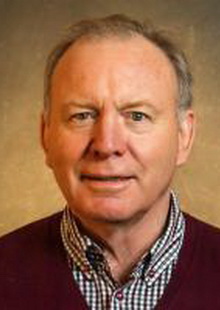
Professor Hamish L Fraser, Director of Center for the Accelerated Maturation of Materials, Department of Materials Science and Engineering, The Ohio State University, will give a plenary lecture on YUCOMAT Conference.
YUCOMAT – attracts a large number of top-class scientists
In an interview for our Newsletter he talks about the current and future projects he is involved in; Read the full interview here!
Professor Freser can you tell us about the focus of your research at the Center for the Accelerated Maturation of Materials?
We established the Center for the Accelerated Maturation of Materials (CAMM) a number of years before the founding of the US initiative “The Materials Genome Initiative” which then morphed into “Integrated Computational Materials Engineering (ICME)”. CAMM’s activities involve an integration of computational and experimental materials science and engineering. We mostly focus on metallic materials for structural applications, for example, in the aerospace and transportation sectors. We are involved in materials processing and characterization, and development of computational models for the prediction of microstructural evolution (phase field modelling) coupled to crystal plasticity/finite element methods for prediction of properties.
What are some of the latest developments or breakthroughs in accelerated maturation techniques for materials that you and your team have been working on?
We aim at developing predictive tools for microstructure/property interrelationships, as noted above generally involving the coupling of phase field modeling with crystal plasticity/finite element methods. Applying these methods to Ti alloys, Ni-base superalloys, and refractory high entropy alloys, we have made considerable progress (so I am claiming!!) with the prediction of microstructure/property interrelationships.
Parallel with your research and academic career you are active in knowledge sharing and promotion of science, including the participation in YUCOMAT conferences for years now. What does YUCOMAT represent for you?
Yucomat is a superb conference set in a relaxing environment. Often, it involves a single session so that one is not confronted with a conflict of choice of talks to attend. More importantly, there is plenty of opportunity to be able to discuss subjects during breaks, etc.. The conference also attracts a large number of top-class scientists enabling contacts with these people to occur.
As a prominent figure in the materials science community, what do you see as the most promising areas of research for the future, and what potential impact could they have on society?
Actually, the usual set of culprits!! Biomaterials, functional materials, structural materials, computational materials sciences, and research into new techniques such as the development and application of machine learning (ML) and artificial intelligence (AI). Watch out for the combination instrument incorporating aberration-corrected (S)TEM and atom-probe tomography! All of these will impact much of society.
You have graduated over 50 doctoral students. For aspiring researchers and students interested in materials science, what advice would you give them to pursue a successful and impactful career in this field?
Basic and applied research in materials science and engineering is an area with huge opportunities to learn and use curiosity and creativity. Successful research scientists have a great deal of fun and satisfaction while being paid for their work! So, to succeed, be very inquisitive, enthusiastic, and derive satisfaction by taking part in, and developing, new science.
Lastly, can you share a glimpse of any exciting projects or research you and your team are currently working on or planning for the future?
We are currently working on projects involving development of refractory high entropy alloys, additive manufacturing, hot isostatic pressing of titanium alloys and Ni-base superalloys, understanding the deformation mechanisms in new titanium alloys exhibiting impact resistance, and development of metastable beta-titanium alloys. One future project is aimed at providing a solution to the dwell-fatigue problem associated with titanium alloy disks in gas turbine engines. As I am a card-carrying physical metallurgist (!!), all of these projects are really exciting for me!










